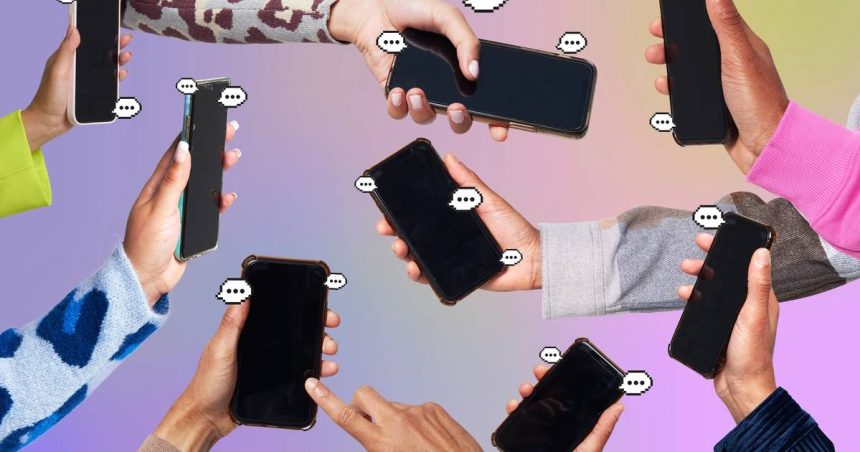Newsflash: Half of US adults are getting their news, at least sometimes, from social media, according to a new study of American news consumption habits from the Pew Research Center.
Which social media, to be exact? According to the research, which surveyed 8,842 US adults between Sept. 25 and Oct. 1, Facebook—which has steadily deprioritized news content—is king, with three in 10 respondents saying they regularly get news from the platform. YouTube was also a major source for news, with around a quarter (26%) of respondents stating they regularly get news from the site. Instagram was next with 16%, while 14% of respondents said they regularly get news from TikTok.
While the number of Americans getting news from TikTok remains a small percentage, its popularity as a news source among its user base is growing. Among users of the app, more than four in 10 (43%) reported regularly getting news from TikTok, Elisa Shearer, a senior researcher at Pew, told Marketing Brew. That’s in line with the percentage of Facebook users who reported regularly getting news from the platform, and is 10 percentage points lower than X (formerly Twitter), where 53% of users reported regularly getting news from the app.
“When we first asked this question in 2020, about 20% of TikTok users got news there regularly,” Shearer explained. “This year, that almost doubled to 43%.”
The growth of news consumption on TikTok bucks a trend across other more established platforms, which users seem to be relying on less for news consumption. Users on X, Facebook, Reddit, and Snapchat reported regularly getting news from those sites in lower numbers than they did three years ago, Pew found.
Digital world: Overall, American adults are getting more news from social media, and are getting less from television. Almost six in 10 Americans said they prefer to consume news from a digital device, Pew found, and more than four in five (86%) said they often or sometimes got news from a smartphone. Only 27% of respondents said they prefer to get news from TV, with respondents ages 50 and older “more likely to prefer television and print publications.” Overall, about a third of news consumers (32%) said they often get their news from TV.
Get marketing news you’ll actually want to read
Marketing Brew informs marketing pros of the latest on brand strategy, social media, and ad tech via our weekday newsletter, virtual events, marketing conferences, and digital guides.
It depends: On Nextdoor and Facebook, women accounted for a higher percentage of regular news consumers, clocking in at 66% and 62%, respectively, while Instagram and TikTok trailed closely behind, with 59% and 58% of women saying they consume news on those sites. Men made up a higher percentage of news consumers on Reddit (67%), X (62%), and YouTube (58%).
Red, white, and blue: When it came to political leanings, there was “no significant partisan difference among news consumers” on Facebook, X, and Nextdoor. But there was a correlation between political affiliation and news consumption itself: According to Pew, the majority of regular news consumers are Democrats or Democratic-leaning, while there was no higher likelihood of Republican or Republican-leaning news consumers on any of the social media sites included in the survey.
Keep scrolling: The social media landscape itself has changed quite a bit this year. TikTok’s short-form video domination continued to grow, and new apps, like Threads, emerged to varying levels of success. Meta’s move away from news included plans to remove the news tab from the app in certain countries, parting ways with its VP of news partnerships, Campbell Brown, and a declaration from Instagram and Threads head Adam Mosseri that “politics or hard news” is not required to make Threads a “vibrant platform.”
As new platforms grow, news consumption habits are bound to follow, Shearer said.
“When we started to study it…there were just a couple of platforms. Now it’s a full-fledged ecosystem,” Shearer said. “Some sites are going to become less popular, some sites will become more popular, but that system will just continue to evolve. It’s a huge part of Americans’ news consumption habits now.”
Read the full article here










